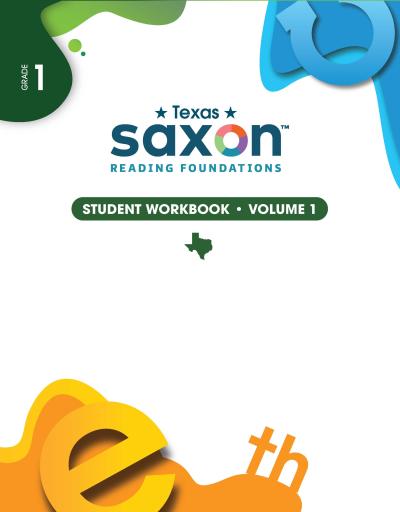Evaluation for 1.3a
Materials include comprehensive, structured, detailed lesson plans that include daily objectives, questions, tasks, materials, and instructional assessments required to meet the content and language standards of the lesson (aligned with the TEKS and the ELPS).
The Saxon Reading Foundations materials include comprehensive, structured lesson plans aligned to the TEKS and aligned to the ELPS. The materials also include daily objectives aligned to the lesson standards. TEKS- and ELPS-aligned lessons clearly set the goal for daily instruction. For example, in Lesson 26, the objective is "To decode words with the letter m by applying letter-sound correspondence." The Saxon Reading Foundations materials include questions to check for understanding of lesson objectives. For example, each unit includes a "Summative Assessment" chart, which is intended to show which standards are assessed and multiple-choice questions to check for understanding and mastery of the units' objectives. Each individual activity within the Saxon Reading Foundations lessons has a clear, specific objective. Furthermore, the Lesson Preparation section lists materials necessary, such as Alphabet Handwriting Strips, Letter Tile b, additional Letter Tiles, Review Decks, Letter Card 17, Picture Card 21, Sight Word Card 11, Spelling Card 19, Worksheet 24, Handwriting Practice Bb, Decodable Reader 6, a balloon in a sack, and colored pencils. To support efficient planning, the Teacher's Manual includes images of these materials, offering visual guidance for teachers. This structure ensures that teachers are fully equipped for effective instruction. The materials contain structured lessons that include assessments every five lessons to gauge the mastery of the previous lessons. For example, Lesson 125 assesses reading, spelling, fluency, sight words, and written text. In the Teacher's Assessment Guide, the mastery percentages are listed for each section. However, the connection to the lesson objective is minimal. The materials do include specific tasks designed to promote mastery of the lesson objectives. For example, in Lesson 52, the increment introduces the floss rule, explaining that when a one-syllable root word has a short vowel followed by the sound /f/, /l/, or /s/, these sounds are usually spelled ff, ll, or ss. Students are guided through the gradual release model to identify words that do and do not follow the floss rule, supporting the development of foundational phonics skills.



